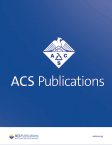社区联系委员会:明尼苏达大学联合安全小组如何创新促进纵向安全参与
IF 3.4
Q2 PUBLIC, ENVIRONMENTAL & OCCUPATIONAL HEALTH
引用次数: 0
摘要
明尼苏达大学双城分校的联合安全团队 (JST) 是一个由研究人员领导的成熟安全团队,最近成立了一个新的社区联系委员会 (CCC),以巩固其与全国其他由学生领导的实验室安全团队 (LST) 的合作历史。社区联系委员会旨在通过与高中科学教师、以本科院校为主的早期研究人员以及当地化工行业建立联系,与更广泛的科学界进行接触。作为早期工作的一部分,CCC 为高中化学教师开发了一个安全讲习班,帮助他们识别和解决常见的安全问题。通过课堂讲座和动手实验室,向学员介绍基本的安全概念和新的工具,以了解和解决安全问题,所有这些都旨在提高他们课堂上的安全。通过与 PUI 不断交流经验和资源,CCC 帮助本科生和教师创建了一个独立、足智多谋的学生安全团队,让学生参与安全责任、培养领导力并影响 PUI 的安全实践。最后,本作品讨论了 CCC 与行业合作伙伴之间的合作,其重点是让明尼苏达大学的研究生了解行业的安全标准,以便他们为成为理想的员工做好最佳准备,从而造福行业。总之,CCC 是将 JST 的积极影响扩大到更广泛的化学界的有力工具,它有助于将 JST 的安全实践传授给 PUI 和高中,同时也让他们了解行业安全标准。本文章由计算机程序翻译,如有差异,请以英文原文为准。

Community Connections Committee: How the Joint Safety Team of the University of Minnesota Innovates Promoting Vertical Safety Engagement
The Joint Safety Team (JST) of the University of Minnesota Twin Cities is a well-established researcher-led safety team that recently developed a new Community Connections Committee (CCC) to build on its history of collaboration with other student-led Lab Safety Teams (LSTs) around the country. The CCC aims to engage with the larger scientific community by connecting with high school science instructors, early stage researchers at primarily undergraduate institutions (PUIs), and local chemical industries. As part of its early work, the CCC developed a safety workshop for high school chemistry teachers to help them identify and address common safety issues. Participants are introduced to fundamental safety concepts and new tools to understand and address safety concerns through classroom lectures and hands-on laboratories, all aimed at improving safety in their classrooms. Through an ongoing exchange of experiences and resources with PUIs, the CCC helped undergraduate students and faculty create an independent and resourceful student safety team that has engaged students in safety accountability, fostered leadership, and influenced safety practices at the PUI. Finally, this work discusses the collaboration between the CCC and industry partners that focuses on informing University of Minnesota graduate students of the safety standards of the industry so that they can best prepare themselves to be desirable hires and therefore benefit industries. Overall, the CCC is a powerful tool to expand the JST’s positive impacts to the broader chemistry community, helping pass on the JST’s safety practices to PUIs and high schools while also learning of industrial safety standards.
求助全文
通过发布文献求助,成功后即可免费获取论文全文。
去求助
来源期刊

ACS Chemical Health & Safety
PUBLIC, ENVIRONMENTAL & OCCUPATIONAL HEALTH-
CiteScore
3.10
自引率
20.00%
发文量
63
期刊介绍:
The Journal of Chemical Health and Safety focuses on news, information, and ideas relating to issues and advances in chemical health and safety. The Journal of Chemical Health and Safety covers up-to-the minute, in-depth views of safety issues ranging from OSHA and EPA regulations to the safe handling of hazardous waste, from the latest innovations in effective chemical hygiene practices to the courts'' most recent rulings on safety-related lawsuits. The Journal of Chemical Health and Safety presents real-world information that health, safety and environmental professionals and others responsible for the safety of their workplaces can put to use right away, identifying potential and developing safety concerns before they do real harm.
 求助内容:
求助内容: 应助结果提醒方式:
应助结果提醒方式:


